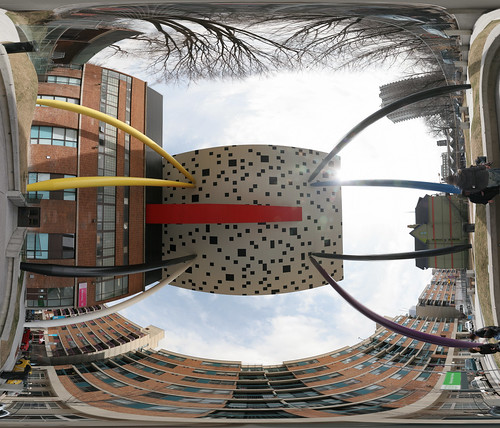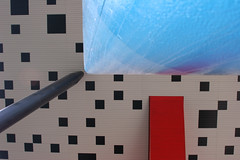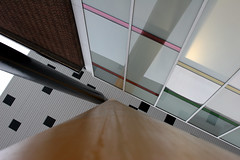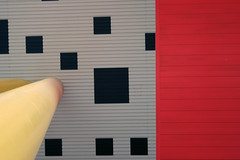I'm not a religious person. I don't have a lot of time or patience for organized religion or supernaturalism. But I am fascinated by the history of religion and religiousness. You can't properly comprehend human history without knowing something of human religion, after all.
The three Abrahamic religions make the most news around here, of course. Western history makes no sense without taking those three into account. Since the 60s, though, there has also been a fascination with "Eastern religions" (though often in bastardized forms). The Beatles were a major source of that interest, with their involvement with the shyster Maharishi Mahesh Yogi and his Trancendental Meditation movement.
Naturally, the "Eastern religions" fad involved Buddhism as well (think of
Zen and the Art of Motorcycle Maintenance, for example). As with many religious fads, there's a lot of confusion and over-simplification of the Buddhism in the general public -- no doubt this makes it easier to convey through TV. Buddha's this
serene-looking (or
fat and jolly) guy with big earlobes who talked about one-handed clapping a lot, and so on.
Well, what better way to clear up popular cultural misconceptions about an ancient religious figure than a comic book?
Actually, it turns out that a comic book
is a good way of doing this -- provided you do the book right. Which, among other things, means letting it run almost 3000 pages.
A year or two ago, I was browsing through
Pages, an excellent book store in Toronto, when I came across the first volume of a new edition of Osamu Tezuka's magnum opus,
Buddha. This weekend, I finally finished
Volume 8. Originally written between 1974 and 1984, it has now been translated into English and released as a gorgeous series of hard-cover books, in eight volumes of about 350 pages each.
Osamu Tezuka is best known in North America as the creator of
Astro Boy. Among general animation fans, he's also known for creating
Kimba the White Lion, which is widely believed to have been a major influence on (or ripped off by, depending on how you look at it) Disney's
The Lion King. (This lead to a great gag in the
Simpsons episode
Round Springfield, in which Bleeding Gums Murphy dies. He appears to Lisa in a cloud, and is joined by other characters voiced by James Earl Jones, including Mustafa from
The Lion King, who says, "You must avenge my death, Kimba... I mean, Simba.")
Fans of Japanese animation and comics (anime and manga) know Tezuka as the father of manga. Influenced by early US animation (including Disney), Tezuka almost single-handedly created the Japanese animation and comics genres.
Tezuka's
Buddha starts with the birth of Prince Siddartha Gautama -- the man who would become the first Buddha -- and follows him through his entire life, from his growing up as a sickly but pampered prince, to the shock he received the first time he witnessed sickness and death, his departure to become an ascetic monk, his rejection of ascetism and his enlightenment, his teaching as the Buddha, and his death at the age of eighty.
The subject matter is pretty profound (the nature of human suffering, etc -- not exactly Saturday Morning Cartoon stuff!). Odd as it already seems that someone would write a comic book about it, it's even odder that that someone would be Tezuka. Tezuka's style (especially in his works known in North America) is very cartoony. Not to mention that 3000 pages of deep Buddhist sermonizing would get pretty tedious!
Tezuka, though, is a master of his craft. He tells the stories though an incredibly deft mixture of storytelling ranging from cartoonish slapstick to the profound.
Scott McCloud, in his wonderful book
Understanding Comics, uses several examples from
Buddha to demonstrate some characteristically Japanese forms of graphic story telling.
Tezuka tells the stories not only of Buddha but of those who surround him: Tatta the theif, his first disciple; Ananda the murderer, whom he redeemed; Devadatta, the monk who wanted to follow Buddha as leader of the sect, who eventually tried to murder Buddha; and so on. Some of the characters (such as, I
think, Tatta) are Tezuka's invention, but many are from the established Buddhist traditions. Tezuka also spends a lot of time on the political situation in India during Buddha's lifetime, as this affected Buddha strongly. His own people, the Shakya, were conquered by a neighbouring king after he left on his quest for enlightenment.
Tezuka's not afraid to mix humour, slaptstick, and anachronisms into his storytelling, either, which helps lighten the mood at times. Characters often make reference modern events, television, and even other Tezuka works. In one of the scenes in which Buddha heals someone, he suddenly transforms into Tezuka's fugitive-surgeon character,
Black Jack for a couple of panels. Tezuka himself even appears for a couple of fouth-wall-breaking moments. Which is not to say that everything is fun and games -- many of the stories around Buddha are
violent as well.
There are a number of example pages from the first two volumes at
this Scandanavian review.
Tezuka also demonstrates that his drawing skill extends far beyond well-known cartoony style. His drawings of the mountains of northern India are breathtaking, incredibly detailed and beautifully rendered, while still meshing well with the much simpler character renderings.
Getting the complete set is expensive: each volume is around $22 CDN, which means that the whole
Buddha set is even pricier than
The Complete Calvin & Hobbes. But if you have an interest in the history behind Buddha, it's definitely worthwhile. Of course, I collected the eight volumes over a period of several months, rather than buying them all at once!
Read more!

 The structure's proper name is The Michael Lee-Chin Crystal. The Crystal was designed by Daniel Libeskind to replace the previous ROM expansion, which had been build a few decades ago between the two north wings of the H-shaped ROM building.
The structure's proper name is The Michael Lee-Chin Crystal. The Crystal was designed by Daniel Libeskind to replace the previous ROM expansion, which had been build a few decades ago between the two north wings of the H-shaped ROM building.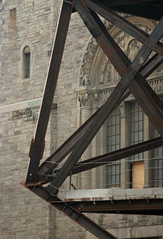 The old expansion was function, though a little dull -- a terraced structure set back from Bloor Street with tan walls and dark windows. The Crystal is certainly a major departure -- instead of sloping back from the road, it will stick out over it, looming over pedestrians. No-one's quite sure what to make of it yet -- it's completely different in style from the building it's expanding (a serious Victorian structure, very academic-ivy in flavour). Some people hate it already, though personally I'm hopeful. I think it could work quite well, though I'm a little worried about the final effect the mix of aluminum sheathing and windows is going to have -- I would have preferred all-glass.
The old expansion was function, though a little dull -- a terraced structure set back from Bloor Street with tan walls and dark windows. The Crystal is certainly a major departure -- instead of sloping back from the road, it will stick out over it, looming over pedestrians. No-one's quite sure what to make of it yet -- it's completely different in style from the building it's expanding (a serious Victorian structure, very academic-ivy in flavour). Some people hate it already, though personally I'm hopeful. I think it could work quite well, though I'm a little worried about the final effect the mix of aluminum sheathing and windows is going to have -- I would have preferred all-glass. Unfortunately, there's been no talk of reviving the planetarium. I wonder what they'll end up doing with it.
Unfortunately, there's been no talk of reviving the planetarium. I wonder what they'll end up doing with it.